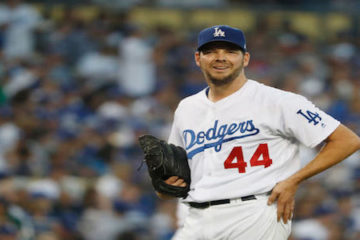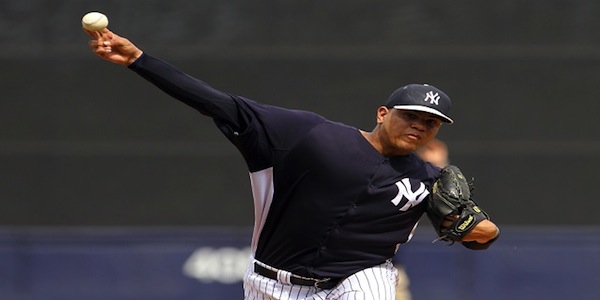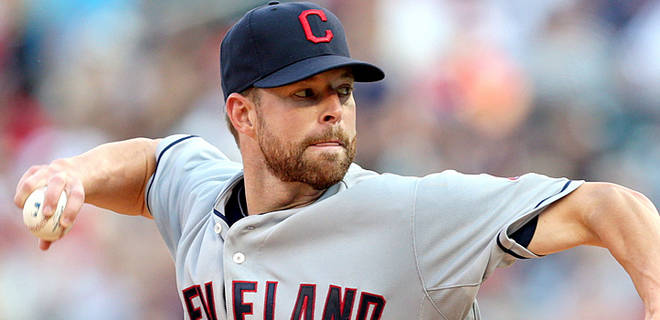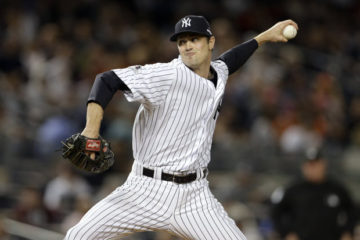Cleveland Indians Acquire Andrew Miller from New York Yankees
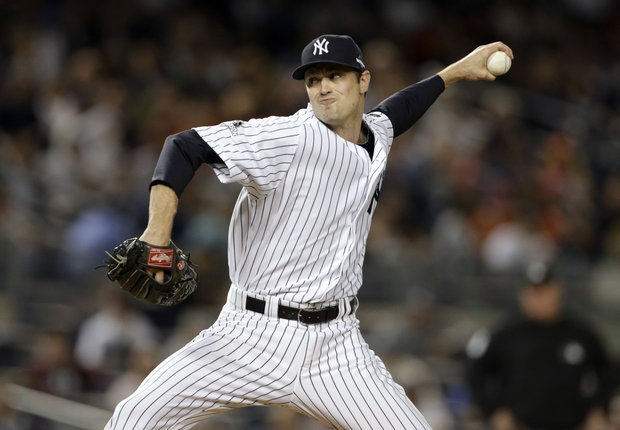
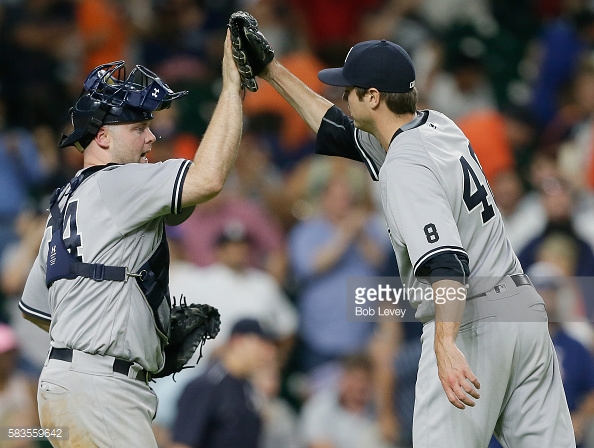
The New York Yankees finally pulled the trigger on an Andrew Miller deal Sunday, trading him to the Cleveland Indians in a four-player return headlined by top prospects Clint Frazier and Justus Sheffield. Many speculated that Miller would be traded prior to the deadline, but the Yankees kept insisting that they weren’t looking to deal Miller, and it would take a big package to make them part with the left-hander.
This package turned out to be exactly what the Yankees were looking for, and after seeing the team drop the first two games of a three game series against the Tampa Bay Rays, owner Hal Steinbrenner gave GM Brian Cashman the green light to trade Miller. In Frazier and Sheffield, the Yankees get two top 100 prospects in baseball, along with two more prospects that both project to be future bullpen pieces. This trade, along with the now-vetoed Jonathan Lucroy deal, proves that the Indians are all-in for 2016, and they now own one of the best one-two punches in baseball between Cody Allen and Andrew Miller, respectively. The Yankees won’t be sending over any money to offset the $21 million that Miller still has on his contract, which runs until the end of 2018.
Shortly after the trade was announced, the Yankees also announced another move, acquiring relief pitcher Tyler Clippard from the Arizona Diamondbacks in exchange for prospect Vincente (Jose) Campos. The deal is unsurprising, as the Yankees needed depth in the back of the bullpen after trading both Andrew Miller and Aroldis Chapman within a week.
Why the Indians made this deal
The team really wanted to make a statement before the weekend was out, as they were set to go into Monday with both Andrew Miller and Jonathan Lucroy added to their roster. Unfortunately for the Indians, Lucroy exercised his no-trade clause to veto the trade, as the team made him no guarantees that he would be starting at catcher next season. Lucroy, who has one year left on his deal before becoming a free agent, was willing to waive his no-trade clause in exchange for becoming a free agent at year’s end. Unsurprisingly, the Indians said no, so here we are.
Coming out of the weekend with Andrew Miller is nothing to be mad about, of course. Miller is arguably the best left-handed relief pitcher in baseball, and has been one of the best relievers in baseball over the past three seasons. Miller, who was an all-star this year, has pitched to a 1.39 ERA this season, while racking up 77 strikeouts across 45.1 innings, good for a 15.3 K/9. Bryan Shaw, the eighth inning man in Cleveland before Miller came aboard, has struggled somewhat this season, pitching to 4.00 ERA this season after posting two straight seasons of having a sub 3.00 ERA. However, his strikeout rate has spiked this season, so the stuff is still there; Shaw will now be the third option in the bullpen.
Adding a pitcher of Andrew Miller’s caliber to the back of your bullpen is as good as it gets, and to be honest, the Indians made out like bandits compared to what the Chicago Cubs gave up for half a season of Aroldis Chapman. While giving up prospects like Clint Frazier and Justus Sheffield isn’t an easy pill to swallow, it’s justifiable when you’re getting an arm like Andrew Miller back in the deal. With this addition, the Indians’ starters can now go just six innings in the playoffs before handing the ball over to the three-headed monster they have in the bullpen. The Indians look like a true contender for the World Series, and they may not be done making moves.
The team can strike another trade with the Yankees before the deadline, as they’re rumored to be interested in Carlos Beltran. It has yet to be seen, however, if the Yankees will come down from their current asking price, which has pushed a lot of teams away to this point. The Indians are seemingly out of the race for Lucroy now, as other teams have made him their top priority, including the Texas Rangers, Houston Astros, and Detroit Tigers. More likely than not, Lucroy will be changing uniforms once the deadline is up.
Why the Yankees made these deals
Losing two straight games to the Tampa Bay Rays doesn’t help you make the case that your team still has a shot at the playoffs, and it’s easy to believe that Hal Steinbrenner came to this realization over the weekend. Its only throwing salt on the wound now that the team has been swept by the last place Rays. Outside of the bullpen, there wasn’t an obvious strength on this Yankees’ team, which is why they currently sit at .500 on the season, and fourth in the AL East.
Trading Miller, who was a fan favorite and on a team friendly contract isn’t easy, but it’s the right thing to do when you’re in the position that the Yankees are in. Coming into this season, the Yankees’ farm system was right in the middle of the pact in baseball. After a couple of trades, the Yankees’ farm system is within the top five best in baseball, and you can make the case that they have the most talent within their system in the league. Not bad, right?
Adding Clint Frazier, a 21-year-old five-tool player who draws comparisons to Mike Trout is about as easy of a decision as they come. The only downside to this addition is that Frazier will now have to cut his crazy-long red hair, which seemed to be taking on a life of it’s own in recent months. The Indians just recently called up Frazier to Triple-A, a level that typically doesn’t see many 21-year-olds, which speaks to Frazier’s skill set and ability. There’s a good chance that Frazier makes a major league impact as soon as next season, assuming things continue to go right with his development. The Yankees hope that Frazier, along with homegrown prospect Aaron Judge, torture big league pitching for years to come while manning the outfield in the Bronx.
The other big piece coming to the Yankees is Justus Sheffield, the left-handed pitching prospect and nephew of former big-leaguer Gary Sheffield. The former first round pick is 7-5 this year in High-A ball with a 3.59 ERA across 95 innings, striking out 93 and walking 40 batters. Sheffield, just 20 years of age, still has plenty of grooming in his future, but the Yankees believe that his three plus pitches will translate well into the majors. Sheffield’s fastball sits at 92-93 mph, but he can notch is up to 95-96 mph when he needs to. Sheffield also flashes a plus slider, one that can miss bats on both sides of the plate. Add in a changeup that has improved over the past calendar year, and you have yourself a legitimate prospect.
The Yankees also traded for reliever Tyler Clippard, who will try and help fill the void left by Chapman and Miller following their departures. Clippard, who signed a two-year deal with the Diamondbacks prior to the season, owns a 4.30 ERA on the season. Clippard has been in decline for well over a year now, but with just a little over $6 million owed to him in 2017, the Yankees deemed this the right move to help solidify the bullpen.
Improving your farm system this drastically isn’t something we see happen too often, so hats off to the Yankees for being able to pull this off. This team isn’t the same one that we’ve seen in recent memory, and they have bad contracts to thank for that. No longer can the team win by buying the best free agents every year; baseball no longer works that way, and the Yankees now realize that. The team now has six players that ranked in Keith Law’s recent top 50-prospect update in July.


